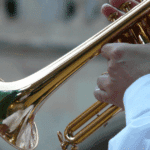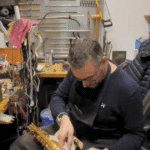The approach "tactile a copperor any other varnished instrumentis undoubtedly more important than for any other wind instrument. With a more intimate grip, a regular maintenance of the instrument will really relevant...
The big clean-up. The aim?
Eliminate unpleasant odours from the instrument resulting from the combination of bacteria and food residues has the following consequencesimprove hygieneof reduce varnish corrosion caused by perspirationof clean the hose and remove any obstacles to air flowbut alsoMaintain lubrication of moving parts and screwed elements.
La frequency of cleaning will inevitably depend on theintensity of useThis can be once a month, every two months or once a year. It's a good idea to have a small "cleaning kit", like the ones we offer at Woodbrass cataloguein particular for trumpetand who have all the useful utensils.
Swab. The essential...
We can start with the mouth. It should be cleaned with soapy water and a damp cloth. small conical brushwithout using abrasive products that could damage the surface. Then we dismantle everything that can be dismantled: pistons and mechanical pistons, backstage... Of course your professor can show you the handling required for dismantling. This is an integral part of the teachingin the same way as learning to play.
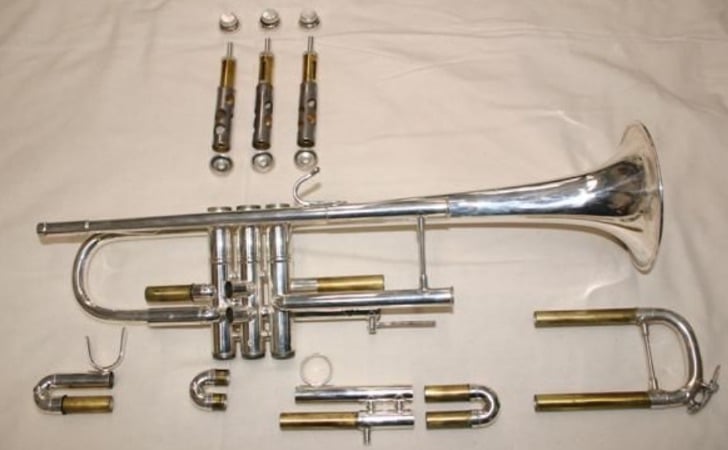
If the pistons are blockedan initial superficial lubrication should make it possible to loosen the piston caps (top and bottom) effortlessly after a few minutes. The body of the instrument in warm soapy water. Do not usewater too hot which could damage the varnish ! A small soft shower will clean the inside of the pipework assembly. On rincera all at cold water and we will dry.

The passage of theswabusually a braided nylon thread ended with a small round brushwill end on internal cleaning. There are several kits available in different manufacturers of which VCB, SML, Reka or even Gewa.
Backstage
Le backstage cleaning will rid them of the accumulations of denatured fat that are likely to paste. The transition towarm soapy water will be the first step. A passage from thededicated swab then rid them of any unwanted clumps that may have accumulated... We will then use a soft brush that won't scratch the chemisage but will remove grease residues on the linings. If saliva marks persist, the marked areas can be lightly brushed with bicarbonate of soda. You will then need to rinse again.
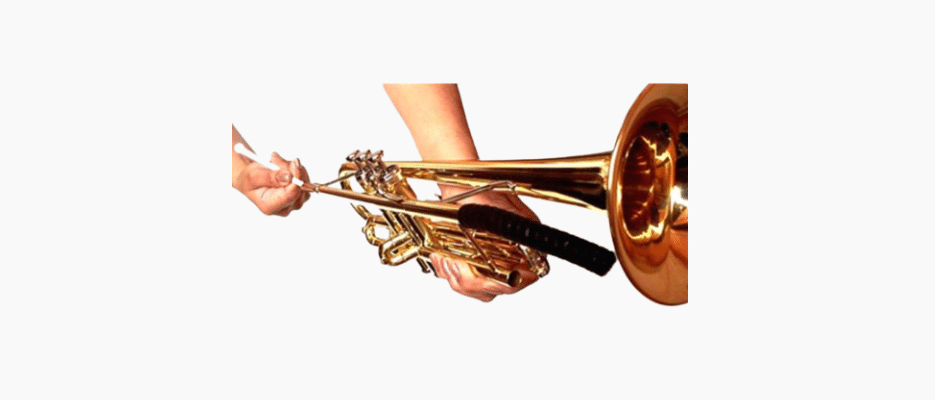
After a cleaning and a thorough dryingwe can proceed with the greasing the slides possibly using two greases with different viscositiesbetween backstage 1 and 3 on the one hand, and the slide 2 and the Agreed pump on the other.
For more information, please refer to thefull article on lubricating mobile slides and tuning pumps.
The pistons
It is essential to use lukewarm soapy water again for the PISTON HEADSthe hats (parts screwed onto the top and bottom of the piston chamber) and the pistons proper. Here too, a light sweep with a soft brush and a wipe with theswab will be effective. Be careful not to let a piston full of soap. If it were to fall to the ground, it could be deteriorated and can no longer be used in the instrument without a compulsory visit to the violin maker. After drying and location, refit the pistons starting with the lower cap. Leave each piston slightly extended from its chamber and apply a few drops of a oil for pistons.
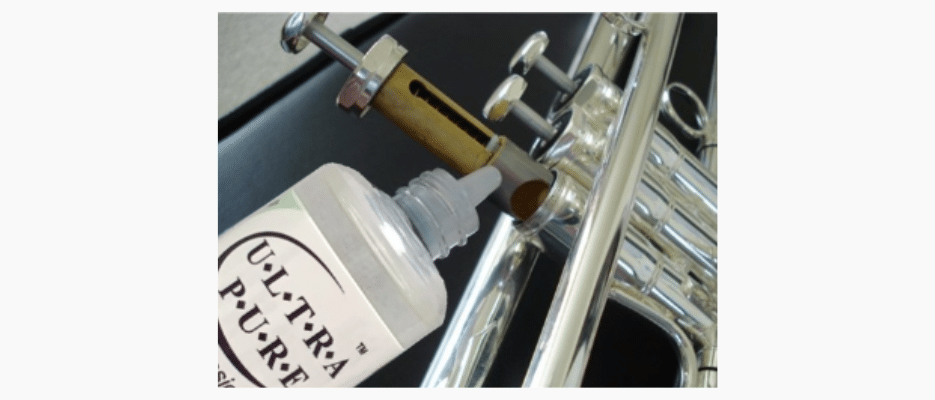
Operate each piston several times to lubricate the entire chamberi.e. the Piston block for the pistons. Check that the piston did not turned before screw the top cap back on. There are several piston oil fluidsadapted to different types of linings. For example normal or ultra-light the brand Ultra-Pure.


It's a good idea to lubrication once a week, without, of course, carrying out the entire dismantling the instrumentin order to reduce metal-to-metal friction who can slow down the flow of the game. Please note that some piston oils have different freezing temperatureswhich can pose problems with game fluidity in a very low temperatures.
Finish
A wipe regularly with a soft cloth on the instrument will eliminate finger markslikely to be the cause of corrosionand will keep theappearance of the varnish. The silver-plated instruments will request a slightly different treatment. Absolutely avoid Mirror household products which will be particularly harmful to varnish. And finally, a vacuuming from time to time in the instrument case will eliminate all dust and leftover snacks before the last service...
What about our own body acidity?
Whatever your instrument (trumpet, trombone, cornet, tuba, saxophoneetc.).purchase usually covered with a pretty varnish. This is usually done to make the instrument more attractive. beautiful and more glossy. This being said, it is often observed that this varnish leaves after a few yearsor even a few month or even weeks ! So, is this a quality defect of this varnish or a poor installation quality of this varnish? Difficult to answer...
Indeed, some musicians maintain their instruments at the perfectionand even pampered to the extreme for hours on end, but it won't do any good if theacidityOnce again, it's important to remember that each of us is unique.
If the varnish will disappear Don't panic! Visit sound quality of your instrument will not suffer. At worst, you'll find that uglybut generally the sound will only be best. Some brands also offer "unvarnished in order to offer instruments "unbridled by this additional layer which tends to muffle the sound.
The good habits ? They're simple. Wipe your instrument clean every time you use iteven if you've only played a few games. minuteseven a few seconds. You can use a slightly damp microfibre cloth to remove the thin film affixed to the instrument.
So always have the good habits to always have the eyes that shine by taking fun to play your instrument... So pamper it !


